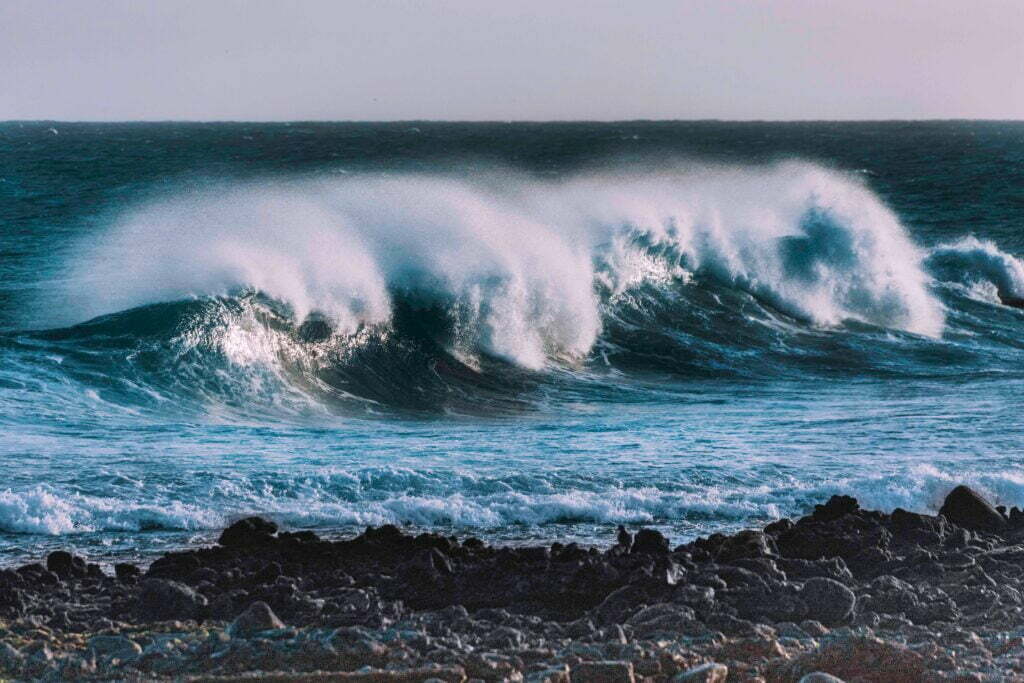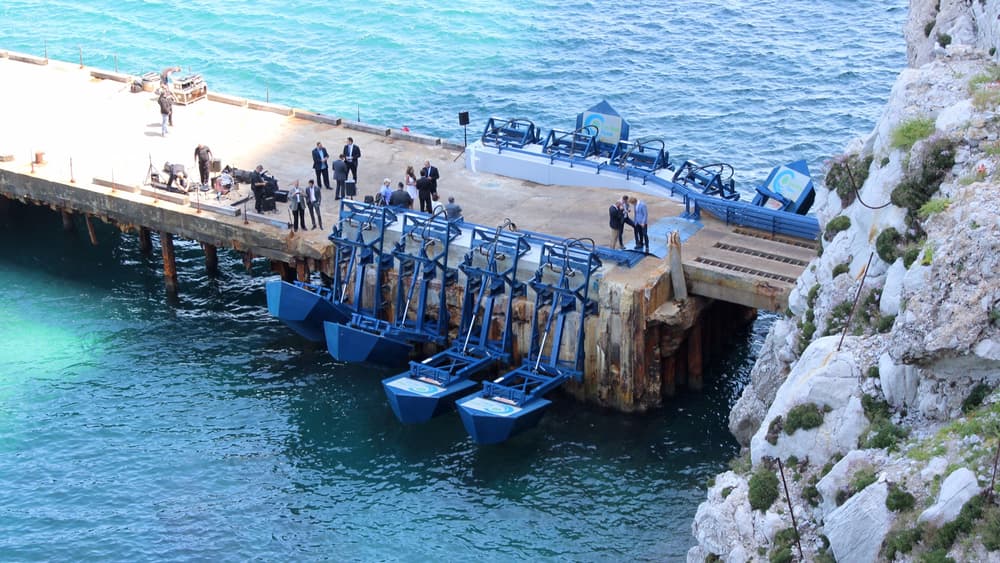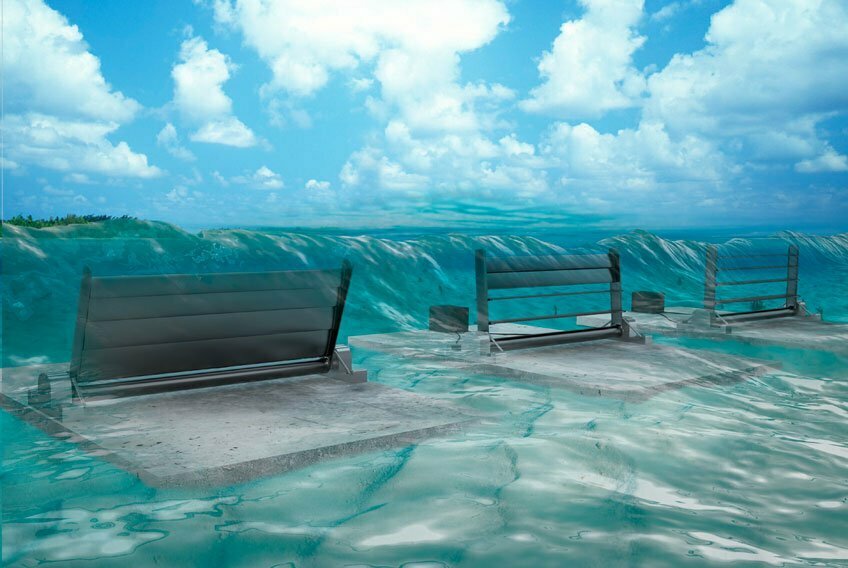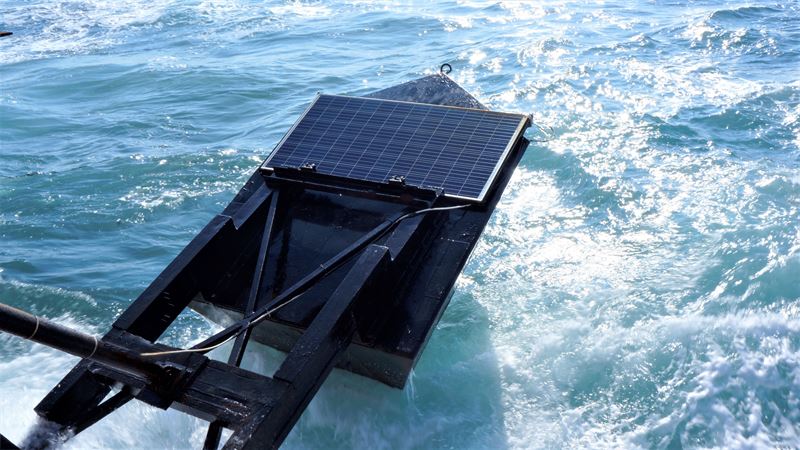Fossil fuels account for more than 80% of the energy we use today. As a non-renewable and declining energy source with significant impact on the environment and global climate, renewable energy sources are becoming increasingly valuable.
Ocean is rich in energy – marine currents, tide, sea waves, osmotic salinity and ocean thermal energy conversion – all reserves enormous power and have a potential of an energy of the future. Among them, waves contain tremendous energy with a total potential capacity of 2.64 trillion kWh, enough for supporting half of the world. Furthermore, it is claimed to have the highest energy density among all renewable energy sources, which is approximately 2-3 kW/m2 while wind and solar energy is 0.4 – 0.6 kW/m2 and 0.1-0.2 kW/m2 respectively.

Challenges
Currently, wave energy converters (WECs) are still in the early stages of technological development relative to more mature renewable energy alternatives. Worldwide capacity for ocean power in 2020 was only 527 megawatts compared to solar power which has a global capacity of 760 gigawatts, which is 1400 times more. According to IRENA (International Renewable Energy Agency), the cost of electricity generated from ocean waves is currently around 30-50 cents/kWh, but in the long term can be reduced by 50% -70%. For comparison – the cost of wind and solar energy is approximately 6-10 cents/kWh, nuclear energy 10 cents/kWh and fossil fuels 5-17 cents/kWh. The problem of WECs is not how to build a converter but how to make producing energy from ocean waves cheaper.
One of the main obstacles of reducing cost is that wave power plants need to be capable of enduring the ocean’s powerful waves, which could be stronger than any winds. “In a wave storm, wave forces may be 100 times stronger than those in operational conditions” according to Dr Phu, a postdoctoral research fellow from the University of Queensland. In order to achieve this, steel and other heavy-duty materials are used. Consequently about 35%-50% of wave energy cost is spent on structural enhancement. If we can think outside of the box and find a way to use less cost to build a machine capable of withstanding the harsh forces experienced underwater, this will greatly reduce maintenance costs which are already high due requiring specialist training and equipment in ocean environments.
Solutions
One strategy that people have come up with so far is to “turn off” the energy converters during extreme conditions. For example, to submerge them into deeper water or lay them on the seabed where the wave force is much smaller compared to that on the water free surface.

The photo shows the floaters designed by the Eco Wave Power Company that can draw energy from converting the rising and falling motions of waves. When the waves are too high for the system, the floaters will automatically rise about the water level and stay in an upward position until the storm passes.
Another strategy is to think about some creative designs. Researchers at the National Renewable Energy Laboratory (NREL) develop variable-geometry components model for building WECs, which would allow for operational adjustment in a variety of sea states. In this way, the device can fine-tune to shed load in large-to-extreme sea states or increase power absorption in low-to-moderate sea states and ultimately, improve the efficiency of generating power and cut down cost.

Wave prediction is another method that can reduce costs by improving the efficiency of energy harvest. Scientists at Carnegie University have developed neural networks capable of predicting the shape and timing of upcoming waves which will help maximize the energy extracted from them.
Wave Energy vs. Solar and Wind Power
Perhaps the most critical factor in development is marketing wave energy as a viable renewable energy alternative to solar and wind power. By developing a low cost, easily serviceable converter, large energy companies will invest money that can be used to deploy these solutions in areas with low power requirements. Much like how solar and wind energy took decades to gain mass use, wave power needs to be used in real world applications that provide tangible benefits to the public so that general interest rises which will lead to even more money that can be spent on development and mass production which would rapidly bring down costs.
Wave energy has the most potential of renewable energy sources since it has the highest energy density and contains 1000 times more kinetic energy that wind. It can also be operated at all times unlike wind and solar, thus it is capable of completely solving the world’s energy needs. Although current deployment is expensive and wave energy systems will likely be loss-making entities for the near future, much like offshore wind farms were in the 1990s, with enough time, money, and technological breakthroughs, they will eventually breakeven and provide greater benefits to the public. The ability to generate more power than wind and solar 24/7 365 days a year away from the shore with minimal impact to the environment make it a project worth investing into. “I expect wave energy technology to be commercialized in a large scale in the coming decade. My expectation is based on recent developments in the area which has reduced costs of electricity and increased the safety of the device. In addition, the post-COVID-19 world commitment to renewable and clean energies is an opportunity for wave energy sector, with more investments expected from governments” says Phu.

Information in the text is used from several sources (IRENA paper, MDPI Energies, Ocean Engineering, NREL, Carnegie Clean Energy, Eco Wave Power and Dr. Huu Phu Nguyen)
This article was created as part of the TeaMWork program that brings together students across the globe (Monash University in Australia and Malaysia, and the University of Warwick in the United Kingdom).
Authors: Kehan Yan, University of Warwick and Apoorva Daiwajna, Monash University Australia


